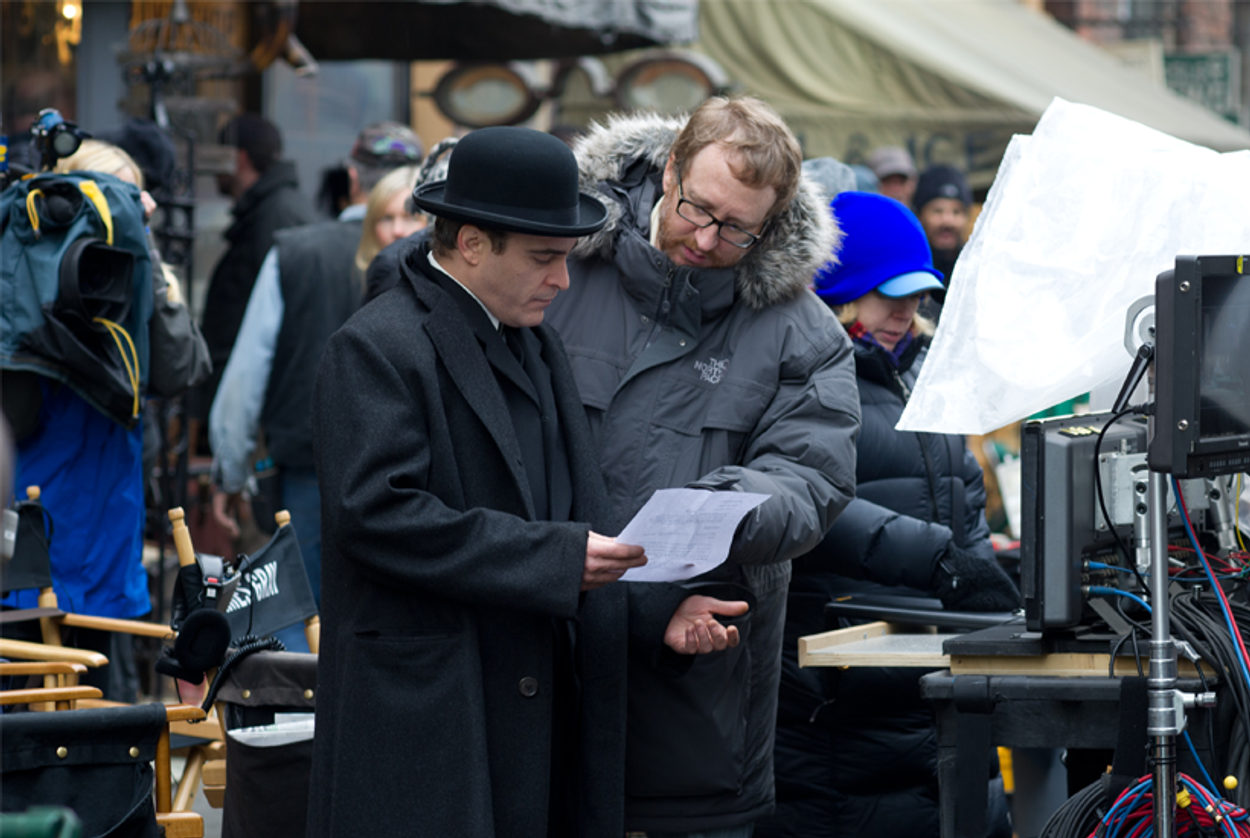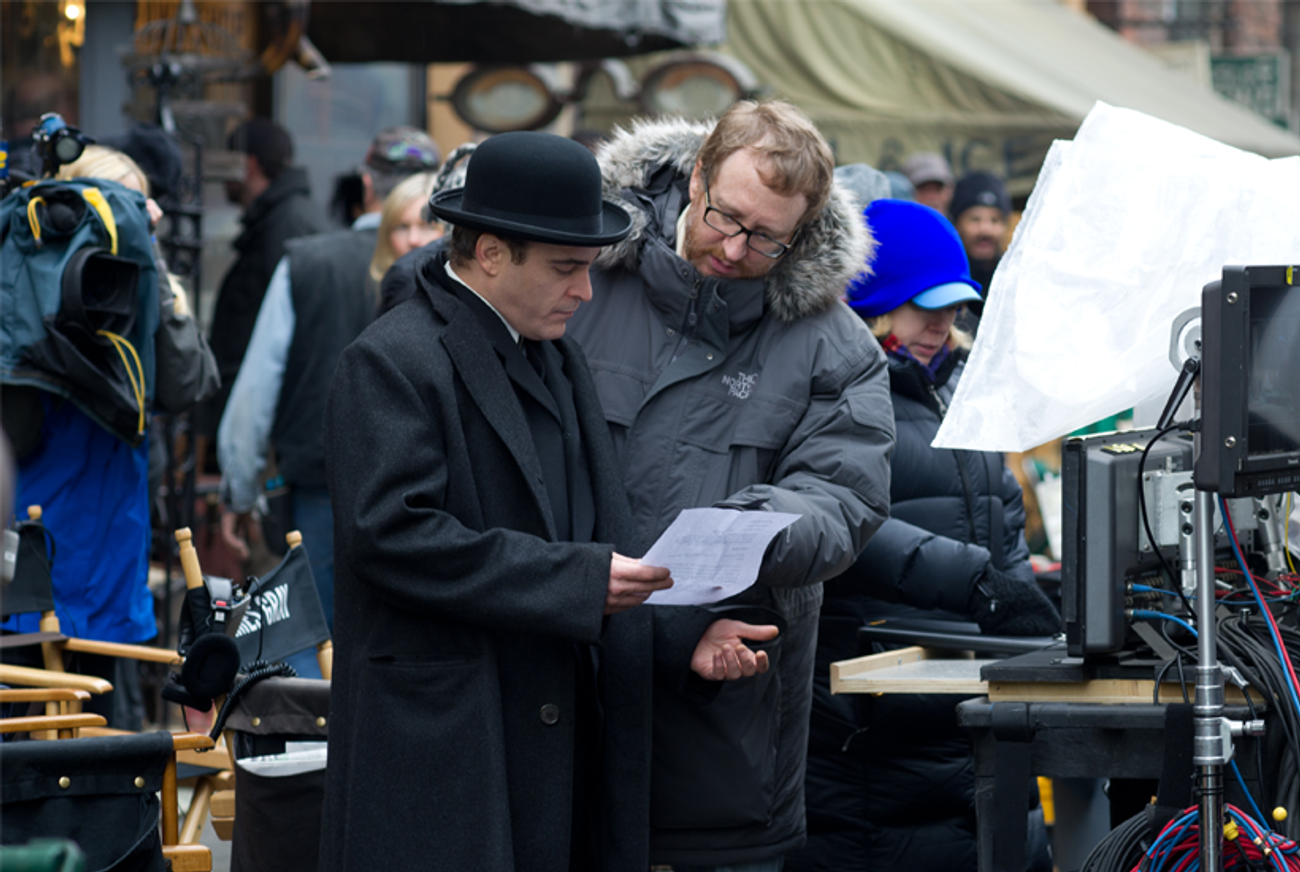Joaquin Phoenix Is His Doppelganger
Director James Gray talks about basing ‘The Immigrant’ on his own family history on the Lower East Side




James Gray, the 45-year-old director of the new period drama The Immigrant, gets excited talking about the grubby energy of Manhattan’s Lower East Side. “It’s the weirdest mix of human beings ever,” he told me during a recent interview in a fancy Tribeca hotel. “And that’s fantastic.” Set primarily on the Lower East Side of the 1920s, The Immigrant is about a vanished era in the neighborhood’s life: “People on the Lower East Side who were Jewish didn’t go over to Little Italy, Little Italy Italians didn’t go over to Chinatown. It was very much not a melting pot, it was a polyglot.”
Gray might be the best Jewish director whose name you can’t quite remember. After a debut film, Little Odessa (1994), set among the petty criminals and strivers of the Russian Jewish community in Brighton Beach, he made a name for himself with two elegant, vivid, supremely intense films about crime and urban corruption, The Yards (2000) and We Own the Night (2007). In both, Gray worked with Mark Wahlberg and with the actor who has since become Gray’s muse and doppelganger, Joaquin Phoenix. His more recent work, beginning with Two Lovers (2008), in which Phoenix plays a lovelorn schlub pining for Gwyneth Paltrow’s shiksa goddess, took a decided turn away from stories of men with guns toward stories of thwarted love. “The last two films are my favorite films that I’ve done,” said Gray. “I think it’s partly due to the fact that they’re more autobiographical, more personal—Two Lovers is not really autobiographical, although it has autobiographical elements—but they feel closer to me. I’ve been able to shed a little of what you might call the genre trappings.”
The Immigrant is like a reverse shot of Two Lovers, this time from the perspective of the beautiful non-Jewish woman spurning the socially maladroit Jewish guy. The film is simultaneously lush and cramped, a sweeping epic confined to tenement apartments, dank tunnels and alleyways, and threadbare theater stages. It begins when a Polish Catholic immigrant named Ewa (Marion Cotillard) is separated from her sister at Ellis Island and falls in with a shifty, mercurial Jewish impresario and pimp named Bruno (Phoenix) and his claque of prostitutes in the hopes of freeing her sister. She meets Bruno’s cousin, a magician named Emil (Jeremy Renner) and is immediately attracted to his cheery optimism, which is not exactly a hallmark of Gray’s prior work.
Gray told me that Bruno, Phoenix’s character, was based on a real-life Lower East Side hustler and pimp named Max Hochstim. “He ran what he called the Association, and he would recruit these women out of Ellis Island,” Gray said. “I knew about it because my great-aunt, who just died—she was 101 years old—her parents had a restaurant which was called Hurwitz’s, right on the Lower East Side, and all these unsavory characters would go in there, and he was one of them.”
Simultaneously formal and terrifying, Bruno is a Jewish character of a type that Gray had rarely seen onscreen. “I do love Woody Allen movies a lot, so maybe I’m guilty of it, but it does bother me, the nebbishy Jewish stereotype,” says Gray. “It puts us in a position of weakness, victim—it drives me nuts. I hate that. Because I never saw my grandparents as victims. My grandfather was a plumber when he came here. He was known as physically one of the strongest people you could ever run into. He literally would bend the bars for steel plumbing with his hands. Which is not quite the image of ‘Lady!’ ” he said, putting on a high-pitched Jerry Lewis voice.
He also takes umbrage at friends and associates who suggested that Phoenix might not be Jewish enough for the role. “It kind of offended me, that somebody who has a certain Montgomery Clift-like handsomeness couldn’t possibly be Jewish,” said Gray. “The family name isn’t Phoenix, it’s Steinberg or something.” (It isn’t, but Phoenix’s mother was born Jewish.) “You know what it is? He has inner turmoil, which is extremely attractive, dramatically. He has a lot of self-loathing. That’s something that’s very vivid for a movie character.”
***
Suffused as they are with family bonds and personal anguish and a decidedly ambivalent attitude toward the blessings of American life, Gray’s films are an attempt, in some semi-conscious sense, to reimagine the lost immigrant-Jewish world of his grandparents, for whom leaving their native lands—even ones where Jews were second-class citizens—was a bittersweet enterprise. “My grandparents, when they came over, it was not,” Gray said, putting on a Russian-grandpa voice, ‘Ve came to Amerike, and so much great things happened, and now millionaires.’ They had melancholy, too. They missed the old country, as insane as that sounds to me now. And that’s, to me, a very powerful idea.”
Gray tried to picture what it might have been like for his grandparents, who immigrated from Poland and Ukraine, to come through Ellis Island and get their first glimpse of America. “What did they eat? What did they wear?” Gray wondered. “To come to America was completely different. Even the registry room at Ellis Island was all kinds of different people. They would have met all different kinds of people in a way that they never would have been aware of if they had stayed—well, they would have died if they had stayed in Ukraine.”
When he began researching early-20th-century immigration patterns, the filmmaker discovered that post-WWI quotas drastically limited the number of Eastern European Jews who were able to come to the United States: “It was Calvin Coolidge saying, ‘America needs to stay American,’ which we know what that means,” he said. Most of the Polish immigrants in the 1920s were therefore Catholic, and Gray decided to make his protagonist a Catholic woman to heighten the sense of her cultural and spiritual distance from the people she encounters on the Lower East Side.
While The Immigrant is hardly joyless (Bruno’s stilted patter as he introduces the international array of lovely ladies for his stage show is hilarious), the film does not stint on demonstrating, repeatedly and at length, that immigrant life was difficult. “I think it does a real disservice to the notion of the American Dream to portray it as a thing where Feivel comes to America and makes good,” Gray said. “Because it becomes then a total fantasy you can mock, as opposed to the struggle to keep it alive, keep it real, keep it something worth striving towards.”
The film shoot included two days at the actual Ellis Island, where Gray oversaw six cameras rolling simultaneously, and huge lights were placed on barges and cranes to allow for day-for-night sets. The Registry Room, now home to a museum exhibit, required extensive post-production effects to digitally excise the displays and placards. The entire Ellis Island shoot was a form of glorious chaos. “You had to get 800 extras in period garb dressed in Manhattan and shipped over by ferry before the ferry stops working at 5:30, and then lunch has to be at 2 a.m., but there’s no kitchen there, so you had to bring lunch in.”
Gray has always been a meticulous filmmaker, his work suffused with an unexpected pictorial beauty, butthe closing sequence of The Immigrant still haunts me some six months after first seeing the film. In it (spoiler alert), Ewa and Bruno part forever, taking their leave of each other in an extended shot that is simultaneously still and fluid. It is one of the more beautiful moments in any American film of the last half-decade. Gray laid out The Immigrant by beginning with its ending, knowing he wanted to conclude with Ewa offering Bruno her forgiveness for his treatment of her. “I needed a shot that had both fates,” he explained, “her fate, and his.”
***
Like this article? Sign up for our Daily Digest to get Tablet Magazine’s new content in your inbox each morning.
Saul Austerlitz is the author of Sitcom: A History in 24 Episodes from I Love Lucy to Community. His Twitter feed is @saulausterlitz.
Saul Austerlitz is the author ofSitcom: A History in 24 Episodes from I Love Lucy to Community. His Twitter feed is @saulausterlitz.